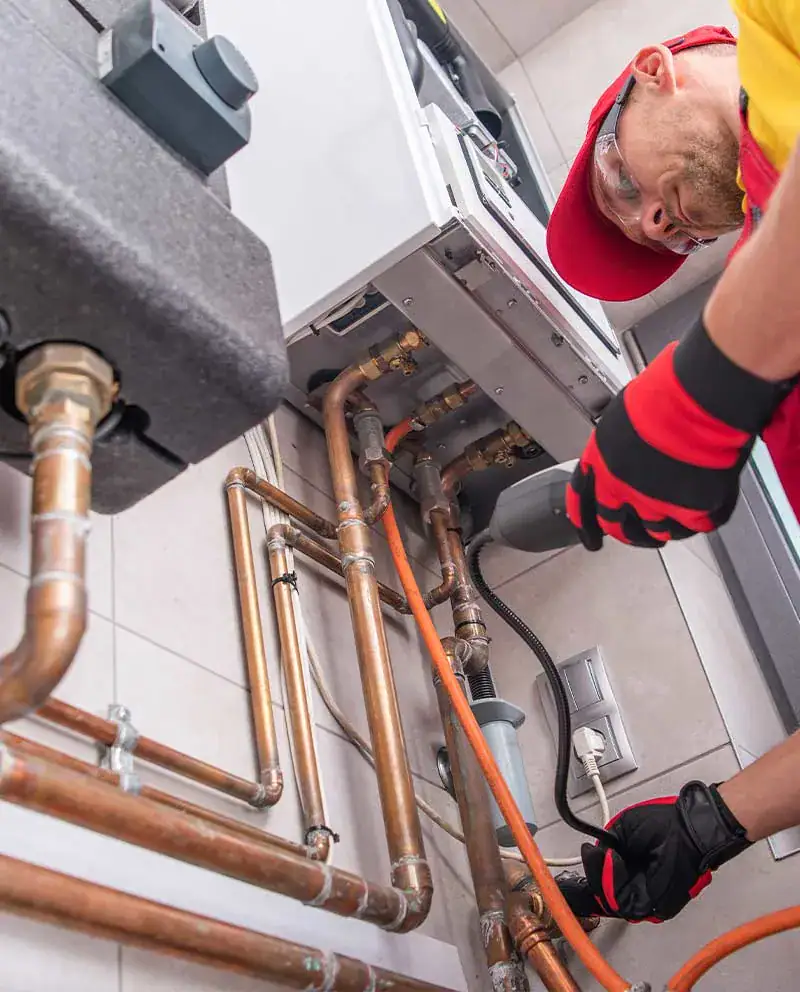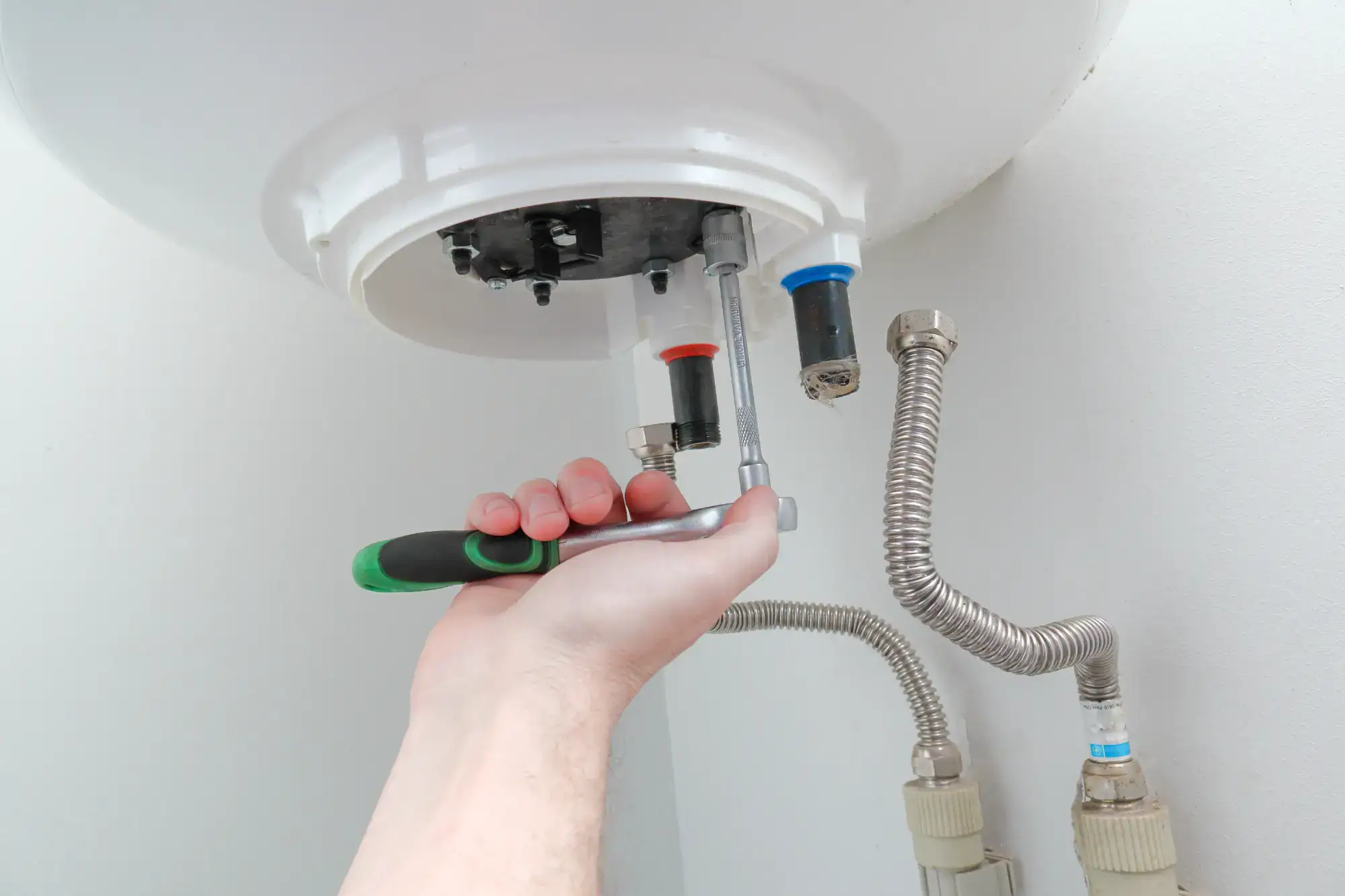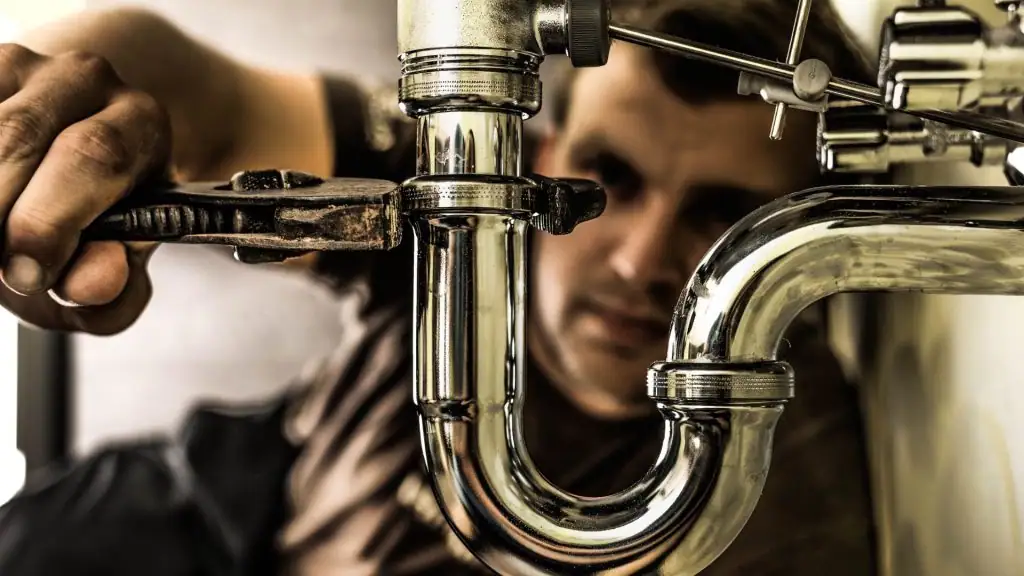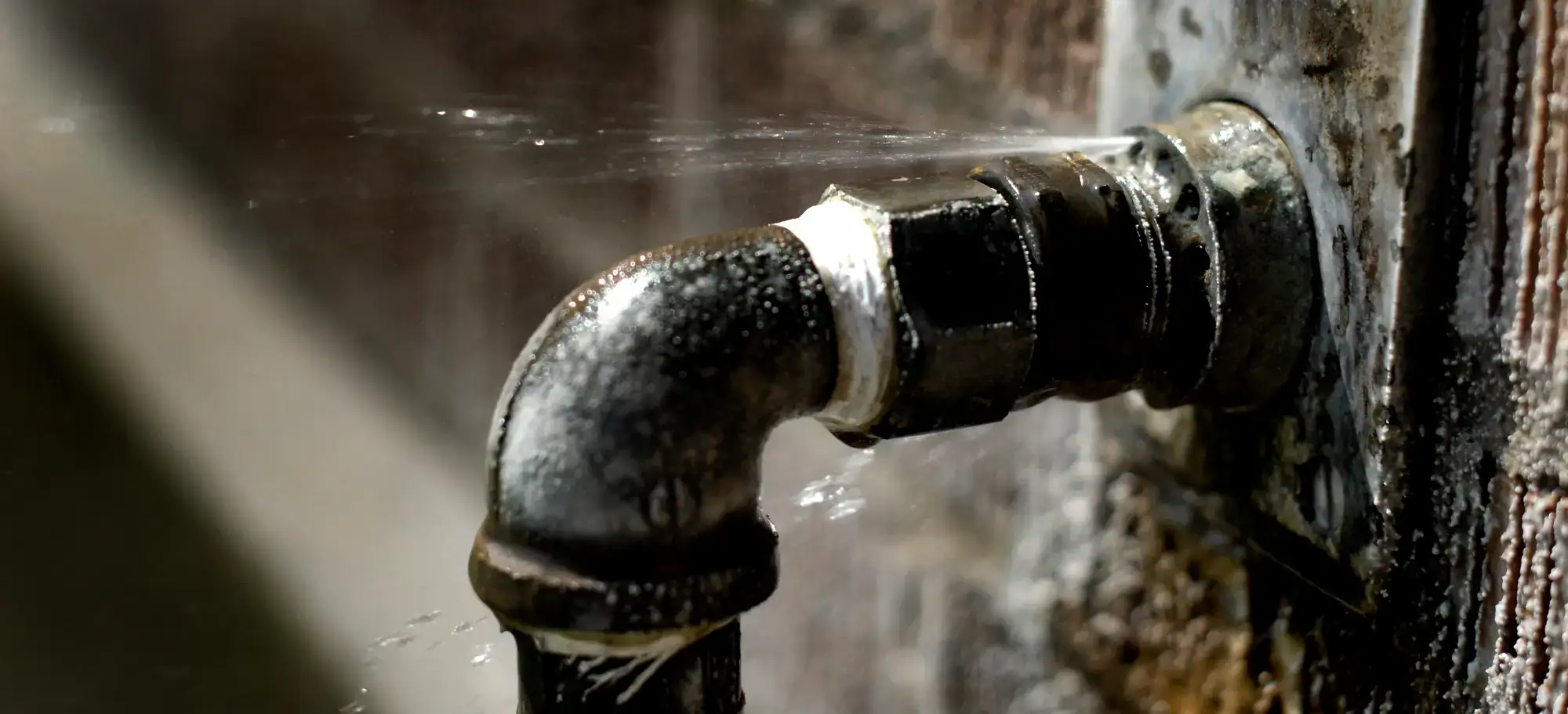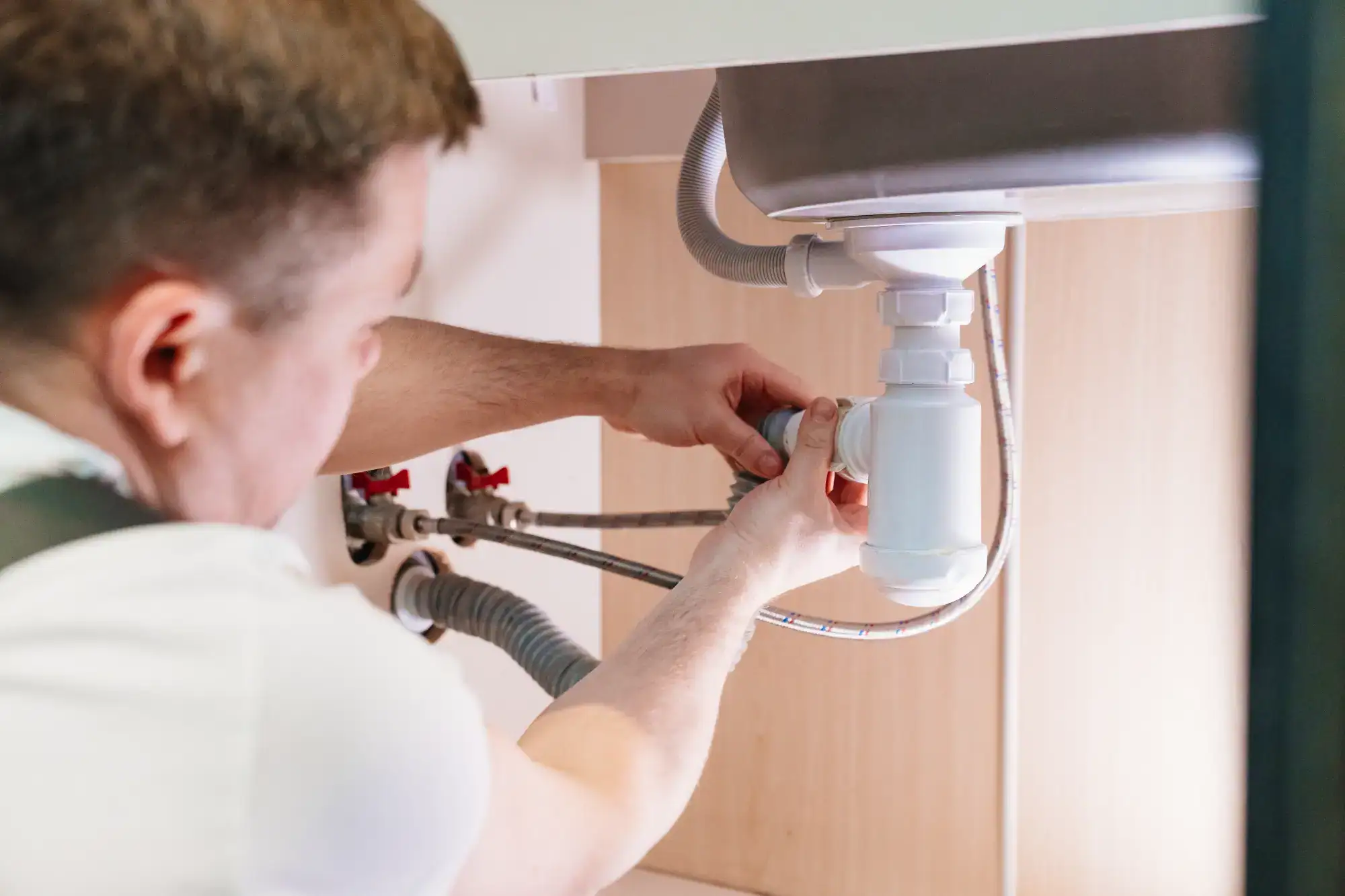Summary:
How Aging Pipes Compromise Your Home's Water Quality
Your pipes do more than transport water—they actively change its quality during the journey from the street to your faucet. Older pipe materials introduce contaminants, harbor bacteria, and create conditions that affect both safety and taste.
What seemed adequate when your home was built now presents real concerns for families who understand more about water safety. The materials and installation methods used decades ago simply weren’t designed with today’s water quality standards in mind.
Galvanized Steel Pipes Create Multiple Water Quality Problems
Galvanized steel pipes, common in San Francisco homes built before the 1960s, become ticking time bombs as they age. The protective zinc coating gradually wears away, exposing the underlying steel to constant contact with water and oxygen. This creates perfect conditions for extensive corrosion.
You’ll first notice the problem as rusty, brown, or yellow-tinted water, especially first thing in the morning or after returning from vacation. The metallic taste becomes unmistakable, and the water often carries a distinct, unpleasant odor that makes you question its safety.
But the real problems run deeper than appearance. Corroded galvanized pipes develop rough, pitted interior surfaces that trap bacteria and other contaminants. These rough spots also collect mineral deposits that gradually narrow the pipe’s diameter. What starts as a water quality issue quickly becomes a pressure problem—weak flow that makes showers frustrating and filling pots painfully slow.
The deterioration accelerates dramatically over time. A pipe that provided acceptable service for thirty years might crumble within a few years once the corrosion process reaches a tipping point. Many San Francisco homeowners discover their galvanized pipes have become so compromised that sections literally fall apart when we attempt repairs.
Even San Francisco’s municipal water system recognizes these problems. The city actively replaces galvanized utility service lines with copper, understanding that these older materials simply can’t deliver the water quality residents deserve and expect.
Lead Contamination Poses Serious Long-Term Health Risks
Galvanized steel pipes, common in San Francisco homes built before the 1960s, become ticking time bombs as they age. The protective zinc coating gradually wears away, exposing the underlying steel to constant contact with water and oxygen. This creates perfect conditions for extensive corrosion.
You’ll first notice the problem as rusty, brown, or yellow-tinted water, especially first thing in the morning or after returning from vacation. The metallic taste becomes unmistakable, and the water often carries a distinct, unpleasant odor that makes you question its safety.
But the real problems run deeper than appearance. Corroded galvanized pipes develop rough, pitted interior surfaces that trap bacteria and other contaminants. These rough spots also collect mineral deposits that gradually narrow the pipe’s diameter. What starts as a water quality issue quickly becomes a pressure problem—weak flow that makes showers frustrating and filling pots painfully slow.
The deterioration accelerates dramatically over time. A pipe that provided acceptable service for thirty years might crumble within a few years once the corrosion process reaches a tipping point. Many San Francisco homeowners discover their galvanized pipes have become so compromised that sections literally fall apart when we attempt repairs.
Even San Francisco’s municipal water system recognizes these problems. The city actively replaces galvanized utility service lines with copper, understanding that these older materials simply can’t deliver the water quality residents deserve and expect.
Want live answers?
Connect with a Sugar Bear Home Services expert for fast, friendly support.
Modern Pipe Replacement Options for San Francisco Homes
Today’s pipe replacement materials offer dramatic improvements over older systems. Modern pipes resist corrosion, maintain excellent water quality, and provide decades of reliable service without the problems that plague aging systems.
The key lies in matching the right material to your specific situation. Your home’s age, existing plumbing configuration, water pressure requirements, and long-term plans all influence which replacement option delivers the best value and performance for your investment.
Copper Pipes Deliver Proven Performance and Superior Water Quality
Copper has earned its reputation as the gold standard for residential plumbing through decades of proven performance in San Francisco homes. This material consistently delivers clean, safe water while resisting the corrosion problems that destroy older pipe systems.
Unlike steel pipes, copper doesn’t rust or flake into your water supply. It won’t leach harmful chemicals or metals that affect taste and safety. Copper actually possesses natural antimicrobial properties that help prevent bacterial growth inside your pipes, ensuring cleaner, safer water for your family with no metallic taste or discoloration.
From a longevity perspective, properly installed copper pipes typically last 50 to 70 years. They handle San Francisco’s water pressure requirements exceptionally well and resist damage from the temperature fluctuations common in our climate. While copper costs more initially than some alternatives, the decades of trouble-free service often make it the most cost-effective choice over your home’s lifetime.
Copper also offers installation advantages that we appreciate as experienced plumbers. The material can be shaped and connected in tight spaces, and our skilled technicians can create joints that will last for decades without leaking. For environmentally conscious homeowners, copper is completely recyclable, making it a sustainable choice for long-term home improvement.
One consideration with copper involves the potential for pinhole leaks in areas with particularly acidic water. However, this typically takes decades to develop, and modern installation techniques include protective measures that virtually eliminate this concern. For most San Francisco homes, copper provides an excellent balance of performance, longevity, and water quality protection that justifies the investment.
PEX Piping Offers Flexible Installation and Outstanding Value
Cross-linked polyethylene (PEX) has revolutionized residential plumbing installations, offering advantages that make it particularly attractive for San Francisco homes needing extensive repiping. This flexible plastic material solves many of the challenges associated with replacing pipes in older homes.
PEX’s flexibility allows it to navigate around obstacles that would require multiple joints and connections with rigid pipes. This means fewer potential leak points and easier installation in homes where accessing existing pipe runs presents challenges. The material can bend around corners and snake through walls, making it ideal for retrofit installations that would be costly and disruptive with traditional materials.
Unlike any metal pipe, PEX never corrodes, rusts, or develops the mineral buildup that gradually restricts water flow. It resists freezing damage better than rigid pipes because it can expand slightly without cracking—a valuable feature during San Francisco’s occasional cold snaps. This flexibility also makes PEX more resistant to earthquake damage, an important consideration in our seismically active region.
Installation typically happens much faster with PEX than with copper, which can significantly reduce labor costs. The material itself costs less than copper, making PEX an attractive option for homeowners working within budget constraints while still wanting modern, reliable plumbing. PEX installation doesn’t require soldering, eliminating fire risks in tight spaces and allowing for safer work in occupied homes.
PEX does have some limitations worth considering. It can’t be used in outdoor applications because ultraviolet light degrades the material over time. Some homeowners prefer copper’s longer track record, as PEX is relatively newer without decades of long-term performance data in every situation. Early PEX formulations had concerns about affecting water taste, though modern products have resolved these issues.
For San Francisco homes needing comprehensive repiping, PEX often provides the most cost-effective solution while delivering significant improvements in water quality, system reliability, and installation convenience.
Protecting Your Family's Water Quality with Professional Pipe Replacement
Your home’s plumbing system directly impacts your family’s health, comfort, and daily routine. Recognizing the warning signs of aging pipes and understanding your replacement options puts you in control of this crucial home improvement decision.
Whether you choose copper for its proven longevity and superior water quality or PEX for its installation advantages and value, replacing outdated pipes represents a smart investment in your home’s future. Modern materials eliminate the water quality concerns, pressure problems, and reliability issues that come with aging galvanized steel and lead-containing pipes.
When you’re ready to explore the best pipe replacement options for your San Francisco home, we at Sugar Bear Home Services bring three generations of plumbing expertise to help you make the right choice for your specific situation, budget, and long-term goals.

